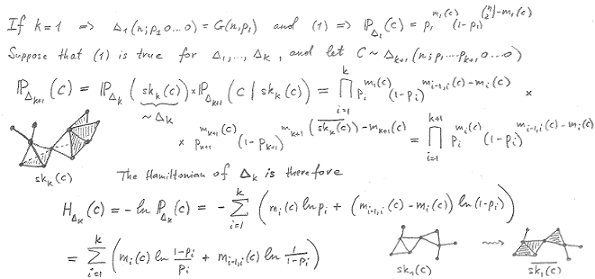My research
is interdisciplinary. I like to branch out, learn new things,
and jump on new problems.
I have written two independent
Ph.D. dissertations and published papers
being affiliated with departments of mathematics, physics,
computer science, and civil engineering. According
to Dyson's “birds-and-frogs”
classification, I am a bird. I have done research in differential
geometry, applied probability, and computational statistics
with applications to integrable systems, rare event estimation,
reliability engineering, quantitative finance, and network
science while living in Moscow, Hong Kong, Los Angeles, Liverpool,
Boston, and Pasadena.
Doing research is thinking
about something that you don't understand. This is a very
difficult and “unhappy
business.” Why do I like it? There are three main
reasons. The first is an immense satisfaction from those very
rare eureka moments, when, after many failed attempts, you
understand “how to put the two sticks together to reach
the banana.” Second, I enjoy collaboration with my students
and colleagues. The most important thing in collaboration
– especially interdisciplinary collaboration –
is to find a common language, which is often a nontrivial
task. Finally, I like writing and explaining my thoughts.
Doing this clearly and logically is a challenge, but I am
trying my best and enjoying the process.
My current main research interest
is network science. I am interested in network
data analysis, network models, network dynamics, percolation,
resilience, and dynamical processes on complex networks. As
a special type of complex networks, I am particularly interested
in course-prerequisite
networks.
Network science is a fascinating
interdisciplinary field, where discrete mathematics meets
continuous, probability meets statistics, statistical physics
meets computer science, and models meet data. For a great
and inspiring introduction to network science, watch the following
three talks by Mark
Newman, one of the fathers of the field, given at the
Santa Fe Institute in 2010: Talk
1, Talk
2, and Talk
3.
To learn about my work in
this field, check my papers on Planar Maximally Filtered Graphs
[10], Network
Reliability Problem [11],
Geometric Preferential Attachment [12],
Exponential Random Simplicial Complexes [13],
Hamiltonian Dynamics of Complex Networks [14],
Causality Networks [17],
Navigability of Random Geometric Graphs [18],
Visibility Graphs [20],
Financial Networks [22],
Critical Infrastructure Networks [C4],
Random Hyperbolic Graphs [27],
and Course-Prerequisite Networks [25,
28].
